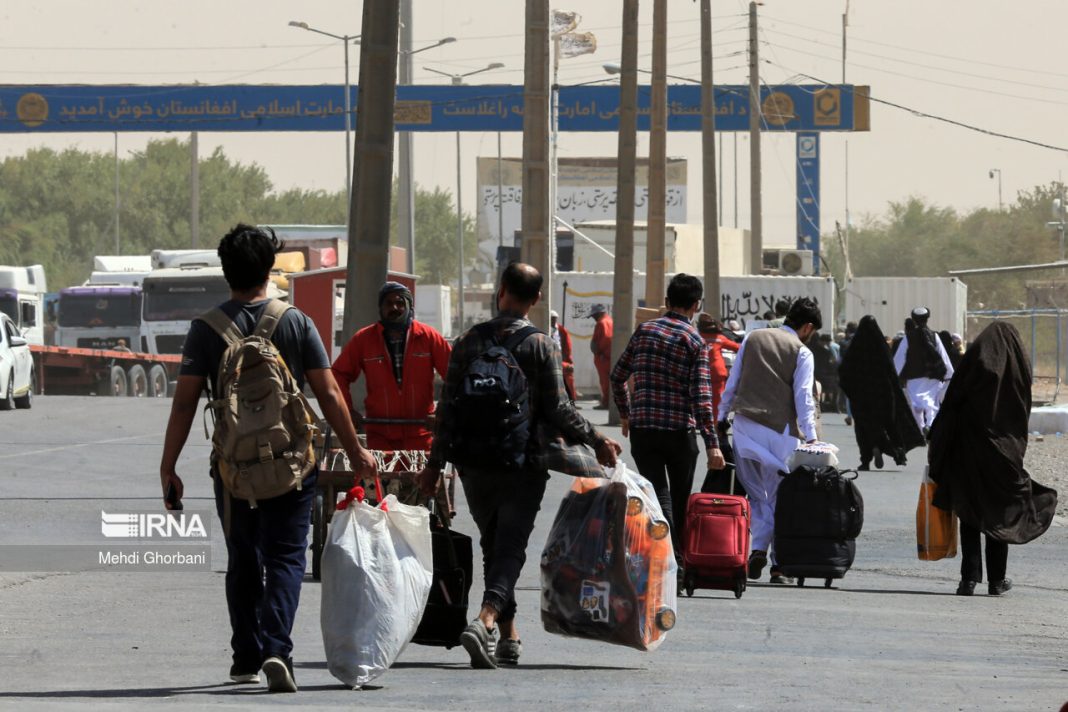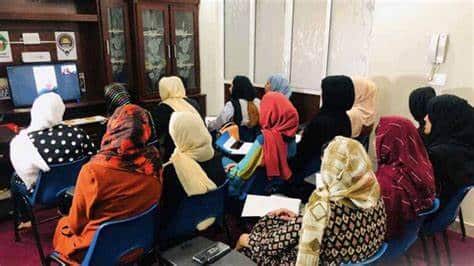
US-Pakistan Cooperation on Afghan Refugee Management
همکاری ایالات متحده و پاکستان در مدیریت پناهجویان افغان
از آگوست 2021، زمانی که طالبان پس از خروج ایالات متحده و ناتو از افغانستان، قدرت را به دست گرفتند، بیش از 600000 پناهجو و مهاجر افغان وارد کشور همسایه پاکستان شده اند. سیاستهای عمدتاً موقتی اسلامآباد مدیریت پناهندگان، خطر سرایت بیثباتی داخلی افغانستان را در جنوب آسیا و فراتر از آن افزایش داده است. با توجه به بی ثباتی سیاسی و اقتصادی مداوم پاکستان، زمینه بیشتری برای همکاری ایالات متحده و پاکستان در مدیریت موثر جریان پناهجویان، جلوگیری از خطرات امنیتی، و افزایش ثبات در افغانستان و پاکستان از طریق هماهنگی سیاست، چارچوب های قانونی، کمک های بشردوستانه و مشارکت های استراتژیک وجود دارد.
سیاست امنیت ملی پاکستان در سال 2022 و توجیه بودجه سال 2023 وزارت امور خارجه ایالات متحده به کنگره نشان می دهد که هر دو کشور قصد دارند از تعامل دوجانبه امنیت محور خود که از لحاظ تاریخی به شدت بر افغانستان متمرکز شده است، عبور کنند.1 پس از خروج ایالات متحده از افغانستان در ماه اگوست. در سال 2021، ایالات متحده کمک های خود را به پاکستان به سمت انرژی پاک، توانمندسازی زنان، کارآفرینی و توسعه کشاورزی و تجاری هدایت کرد. با این حال، پس از خروج از افغانستان، وضعیت در افغانستان بدتر شده است، به طوری که تخمین زده می شود 24 میلیون افغان به کمک های بشردوستانه نیاز دارند و گروه های تروریستی مانند ISKP شتاب عملیاتی پیدا کرده اند. محیط درگیری افغانستان هنوز خطرات امنیتی قابل توجهی را برای همسایگانش، به ویژه پاکستان ایجاد می کند.
از زمان تسلط طالبان بر کابل، بیش از 600000 مهاجر و پناهنده افغان وارد پاکستان شده اند. اگر پاکستان به سیاست های موقت خود در قبال پناهجویان بدون افزایش حمایت ها و کمک های اهدایی برای شهرک سازی دولت سوم ادامه دهد، وضعیت از قبل ناپایدار احتمالا به یک بحران تبدیل خواهد شد. . رشد اقتصادی در سال مالی 2023 از 2 درصد به 0.29 درصد پیش بینی شده کاهش یافته است، بنابراین امید چندانی برای بخش دولتی تحت فشار پاکستان برای تأمین مسکن، معیشت، آموزش و امکانات مناسب برای پناهندگان وجود ندارد.
طالبان افغانستان بارها مرزهای غربی پاکستان را که به تازگی حصارکشی شده است، شلیک کرده اند. در نواحی قبیلهای که قبلاً توسط فدرال اداره میشد (سابق فدرال)، تحریک طالبان پاکستان (TTP) همزمان با اجرای عملیاتهای فراملیتی دولت اسلامی خراسان (IS-K) در منطقه، در حال ظهور است. این یادداشت سیاستی بر ارزش ادامه همکاری ایالات متحده و پاکستان در مورد پناهندگان افغان و مدیریت مهاجران برای جلوگیری از خطرات بیشتر اثرات سرریز مربوط به بی ثباتی در افغانستان تأکید می کند.
ثبت نام افغان ها در صورت عدم وجود قوانین پناهندگی داخلی در پاکستان
پاکستان با وجود نداشتن قوانین داخلی پناهجویان، نیم قرن است که میزبان پناهجویان افغان است. از زمان آغاز درگیری در افغانستان در دهه 1970، پاکستان مقصد ترجیحی مهاجران و پناهندگانی بوده است که از درگیری های طولانی، ستیزه جویی و اقتصاد درگیر جنگ افغانستان فرار می کنند. در یک نظرسنجی در سال 2021 از افغانهایی که به پاکستان میرسند، 93 درصد پاسخدهندگان جنگ و ناامنی را به عنوان دلایل فرار از افغانستان ذکر کردند.5 خیبر پختونوا اکثریت پناهندگان افغان را به خود جذب کرده است. یک نقطه تجاری و ترانزیت بین هر دو کشور است که از سال 2003 تا 2020 افزایش 17.9 درصدی صادرات سالانه را تجربه کرده است.
با وجود محبوبیت سفر بین افغانستان و پاکستان، فرآیندهای مهاجرت، سفر و اسکان مجدد ضعیف نهادینه شده است. فقدان فرآیندهای نهادینه شده، همراه با ظرفیت ضعیف اداری فدرال سابق، تمایز بین مهاجران اقتصادی افغانستان، گردشگران، پناهندگان و ستیزه جویان را که از طریق مرز به پاکستان سفر می کنند، دشوار کرده است.
پاکستان هیچ قانون داخلی پناهندگان یا چارچوب سیاست رسمی برای مدیریت مهاجرت افغانستان معرفی نکرده است. پاکستان کنوانسیون 1951 پناهندگان و پروتکل 1967 آن را امضا نکرده است که حقوق پناهندگی و عدم اعاده پناهندگان را به رسمیت می شناسد و دستورات قانونی کلیدی کلیه عملیات کمیساریای عالی پناهندگان سازمان ملل را تشکیل می دهد. افغانها و از لحاظ تاریخی به مهاجران افغان پناهگاه غیررسمی و دسترسی اقتصادی بر مبنای اولیه، انساندوستانه، بر خلاف ساختار داخلی تثبیت شده، اعطا کرده است. در حالی که ورودیهای افغانستان قبل از سال 2006 در دولت پاکستان تحت دستههای گواهی ثبت (PoR) یا کارت شهروندی افغانستان (ACC) ثبت شدهاند، کارتهای ACC در سال 2018 منقضی شدهاند و از آن زمان بهروزرسانی نشدهاند.11 در عوض، پس از ورود به پاکستان، این یک مسئولیت خود مهاجر افغان برای دسترسی به SHARP (شریک مجری UNHCR) و سایر سازمان های شریک برای درخواست گواهی پناهندگی از UNHCR، که معمولاً ماه ها طول می کشد.
Since August 2021, when the Taliban’s seized power following the U.S. and NATO’s withdrawal from Afghanistan, over 600,000 Afghan refugees and migrants have entered neighboring Pakistan. Islamabad’s largely ad-hoc refugee management policies have heightened risks of Afghanistan’s internal instability spilling over within South Asia and beyond. Given Pakistan ongoing political and economic instability, there is additional scope for U.S.-Pakistan cooperation in effectively managing refugee inflows, preventing security risks, and enhancing stability in both Afghanistan and Pakistan through policy coordination, legal frameworks, humanitarian aid, and strategic partnerships.
Pakistan’s National Security Policy 2022 and the U.S. Department of State’s 2023 budget justification to Congress indicate both states’ clear intent to move past their security-centric bilateral engagement, which has been historically heavily focused on Afghanistan.1 Following the U.S. withdrawal from Afghanistan in August 2021, the U.S. has redirected its assistance to Pakistan towards clean energy, women’s empowerment, entrepreneurship, and agricultural and commercial development. Post-withdrawal, however, the situation in Afghanistan has only worsened, with an estimated 24 million Afghans in need of humanitarian assistance and terrorist groups like ISKP gaining operational momentum.2 Afghanistan’s conflict environment still poses significant security risks for its neighbors, particularly Pakistan.
Since the Taliban takeover of Kabul, over 600,000 Afghan migrants and refugees have entered Pakistan.3 If Pakistan continues its ad-hoc refugee policies without increased donor support and assistance for third-state settlement, the already-precarious situation is likely to become a crisis. Economic growth in financial year 2023 has dropped from 2 percent to a projected 0.29 percent, so there is little hope for Pakistan’s stressed public sector to provide refugees with proper housing, livelihood, education, and health facilities.4
The Afghan Taliban have repeatedly fired across Pakistan’s newly-fenced western border. In erstwhile Federally Administered Tribal Areas (ex-FATA), the Tehrik-i Taliban-i Pakistan (TTP) is resurging at the same time as the Islamic State Khorasan (IS-K) conducts transnational operations in the region. This policy memo highlights the value of continued U.S.-Pakistan cooperation on Afghan refugees and migrant management to prevent further risks of spillover effects related to instability in Afghanistan.
Registration of Afghans in the Absence of Domestic Refugee Laws in Pakistan
Pakistan has been hosting Afghan refugees for half a century, despite having no domestic refugee laws. Since conflict in Afghanistan arose in the 1970s, Pakistan has been the preferred destination for migrants and refugees fleeing protracted conflicts, militancy, and Afghanistan’s struggling wartime economy. In a 2021 survey of Afghans reaching Pakistan, 93 percent of respondents mentioned war and insecurity as reasons to flee Afghanistan.5 Khyber Pakhtunwa has absorbed the majority of Afghan refugees,6 due to deep ethnolinguistic and cultural ties.7 The travel route has also become a trade and transit point between both states, which have experienced an increase of 17.9 percent in annual exports from 2003 to 2020.8 Additionally, some Afghan refugees use Pakistan as a route to resettle or seek asylum in a third state.9
Despite the popularity of travel between Afghanistan and Pakistan, processes for migration, travel, and resettlement are poorly institutionalized. The lack of institutionalized processes, coupled with ex-FATA’s weak administrative capacity, has made it difficult to distinguish between Afghan economic migrants, itinerants, refugees, and militants traveling across the border to Pakistan.
Pakistan has not introduced any domestic refugee law or formal policy framework to manage Afghan migrations. Pakistan is not a signatory to the 1951 Refugee Convention and its 1967 protocol, which recognizes the rights of asylum and non-refoulment of refugees and forms key legal mandates of all UNHCR operations.10 Pakistan does not officially use the term “refugee” when registering Afghans and historically has granted informal refuge and economic access to Afghan migrants on a prima facie, humanitarian basis, as opposed to an established domestic structure. While arrivals from Afghanistan before 2006 registered with Pakistan’s government under the Proof of Registration (PoR) or Afghan Citizen Card (ACC) categories, ACC cards expired in 2018 and have not been updated since.11 Instead, upon arrival in Pakistan, it is an Afghan migrant’s own responsibility to access SHARP (UNHCR’s implementing partner) and other partner organizations to request asylum certificates from UNHCR, which usually takes months.
Main Resource Link
- Tags
- Asia



